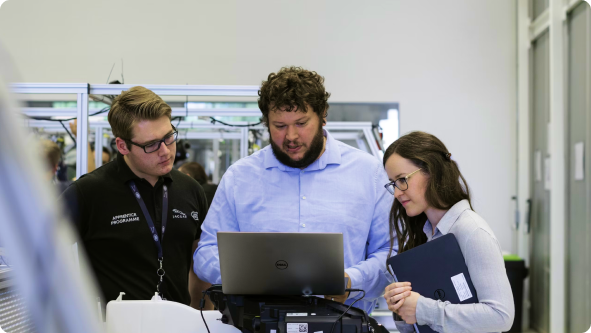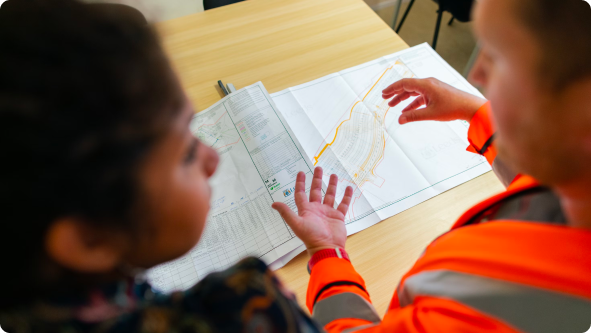Simplify telematics data integration, analysis and sharing with PathStack API
PathStack provides a single API to access and share data from connected assets on any tracking platform.
- Easily connect and unify data from different providers and devices
- Selectively share data between third parties with agreed rules and transparency
- Access powerful analytics across all connected devices instantly
Avoid the time, cost and stress of multiple provider integrations
PathStack is the developer's toolkit for sharing, unifying and analysing data across multiple tracking system users or types. Data owners have control to share only what is required and data consumers have the tools they need to develop rapidly.
Simple telematic account connection via web UI on a branded web page.
Set data sharing rules based on time, location and other criteria to maintain relevance and privacy.
Consumer unified and standardised data for all connected devices via REST API, WebSockets, Webhooks or S3.
Get Going in Minutes
Connect Tracking Service Accounts
Tracking service users connect their data to PathStack via a simple web UI under agreed rules that provide the data owners with control over what is shared. Logs of shared data are available to data owners.
Access Unified Real-Time or Historic Data
Data consumers use the PathStack REST API, WebSockets or Webhooks to access cleaned data across all connected devices shared with them under the agreed data sharing rules. PathStack's suite of functions to enrich, aggregate and analyse the data is available to enhance their use cases.
Enable Ongoing Selective Data Sharing
Data is shared under the agreed rules until the tracking service user revokes access, allowing independent parties to share data when needed and maintain privacy otherwise. Tracking service users can share data with multiple consumers under different rules.
Access tracking data faster
PathStack handles the back-end grunt work of telematics data mapping, transformation and analysis so you can focus on making use of the data.
One API to access Multiple Telematics Platforms
Pathstack handles the details of authentication, data mapping and transformation from all your connected tracking systems so you can focus on using your asset data in your product. Build to one consistent API from any telematics input.
Seamless Tracking Account Connection
Connecting telematics user accounts couldn't be easier. Use your unique link to step through the intuitive UI for connecting accounts from leading telematics providers or stream data directly from your own devices or systems.
Beatiful Data, Available Instantly
Skip the hassle of poor quality and variable data from different tracking systems. PathStack maps all connected devices to a single, best in class data structure with automatic transformations and mapping so you always get the same consistent and comprehensive output from each device. If you need the raw system data, that is available too of course!
Selective Sharing with Transparency
Mitigate privacy concerns when sharing data between independent parties using configurable data sharing rules based on time, location and other criteria. Share data when mutually beneficial, keep it confidential otherwise.
Powerful Analytics to Drive Features
Accelerate your product development with PathStack's suite of analytics functions applied to you connected tracking data and available on demand. Our growing set of functions include spatial, temporal and aggregate analysis available across all platforms.
PathStack in Action

Logistics Aggregation
Modern logistics requires precise coordination across multiple carriers, facilities and operators. PathStack allows these parties to share data from the tracking systems when required to coordinate tasks while maintaining privacy at other times. For each data consumer, PathStack provides a single interface to data from multiple parties, guaranteeing consistent and high-quality data each time.

Contractor Compliance Monitoring
Mining, energy and industrial operations often require contractors operating vehicles on-site to employ telematics and record specific driver safety data. PathStack provides a streamlined method to automate access of the relevant data from all contractors and suppliers when working on site, no matter what tracking system they use.

Infrastructure Planning, Development and Operation
PathStack provides a fast and simple method to collect data from transport infrastructure users that can support planning, research and analysis. Avoid wasting time on manual data collection and preparation and access powerful aggregation functions to extract the insights you need.

Facililty Schedule Optimisation
Freight loading facility managers have a continuous task to optimise schedules for productivity while maintaining CoR obligations for safety. PathStack can connect real-time transport events for scheduled arrivals with facility management to dynamically optimise schedules, leading to earlier notice of potential issues, more time to react and fill slots, lower stress and risk for both parties and potential penalty savings.